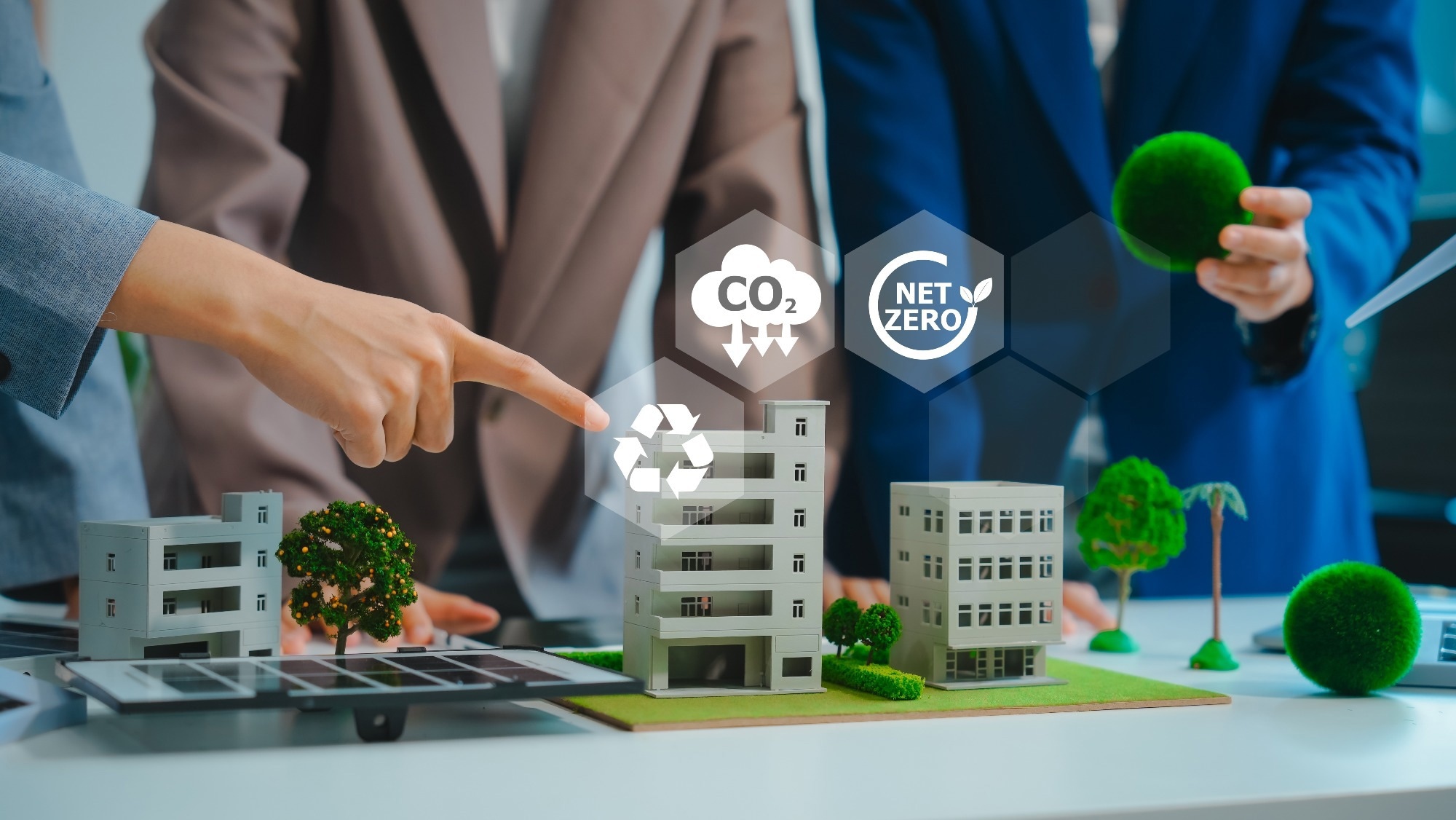 By Nidhi DhullReviewed by Susha Cheriyedath, M.Sc.Dec 12 2024
By Nidhi DhullReviewed by Susha Cheriyedath, M.Sc.Dec 12 2024A recent article in Energy and Buildings explored how European Union (EU) member states are implementing the Nearly Zero-Energy Building (NZEB) standard. The research involved extensive data collection and harmonization, focusing on progress and challenges. The EU-NZEB standard has been mandatory for all new buildings since 2021, with a timeline extending to 2030.
 Study: From Nearly Zero-Energy Buildings (NZEBs) to Zero-Emission Buildings (ZEBs): Current status and future perspectives. Image Credit: PanuShot/Shutterstock.com
Study: From Nearly Zero-Energy Buildings (NZEBs) to Zero-Emission Buildings (ZEBs): Current status and future perspectives. Image Credit: PanuShot/Shutterstock.com
Background
The EU's building sector is responsible for about 40 % of Europe’s total energy consumption and a third of its carbon emissions. This makes the sector a critical focus for energy and climate policies. Over the years, targeted measures have led to significant steps toward decarbonization, but the journey is far from over.
The concept of NZEB was introduced in 2002 under the EU’s Energy Performance of Buildings Directive (EPBD). This directive has been revised several times, raising the bar with stricter energy and climate targets. As of January 2021, all new buildings must meet NZEB standards.
However, the broad definition of NZEB under the EPBD leaves room for member states to interpret and adapt it to their specific circumstances. This flexibility has resulted in varying levels of ambition across the EU. It has also created challenges, such as inconsistencies in renewable energy integration and a lack of clear thresholds for greenhouse gas (GHG) emissions.
Study Overview
The study reviewed how NZEB standards are defined and implemented across 26 EU countries and three Belgian regions. Data was gathered using a template distributed to experts in each member state. The effort, coordinated by the European Commission’s Directorate General for Energy and supported by the Joint Research Centre (JRC), aimed to capture a detailed picture of national approaches.
The template focused on several key areas:
- General Information: Legal frameworks, definition dates, and criteria for new buildings and renovations.
- Building Performance: Requirements for thermal insulation (U-values), airtightness, and other technical factors.
- Renewable Energy: Contribution of renewables, technologies used, and where the energy is generated.
- Energy Use: Primary energy demand, divided into renewable and non-renewable sources, by building type (e.g., homes, offices, schools).
- GHG Emissions: Standards and thresholds for carbon emissions.
Out of the 29 entities contacted, 24 provided data. For the remaining five (Bulgaria, Brussels, Italy, Latvia, and France), researchers relied on the Concerted Action EPBD database to fill in gaps.
Findings
The study revealed that new NZEBs typically consume 30 % less non-renewable energy than renovated ones. Renewable energy contributions, however, vary widely—from 9 % to 55 %—and some countries have yet to quantify their targets for renewables.
Interestingly, while many NZEB definitions exceed the EU’s recommended thresholds for non-renewable energy use, others have set even stricter standards. This variation reflects both the complexity of EU-wide harmonization and the opportunities for national improvements in energy efficiency.
Looking forward, the transition to Zero-Emission Buildings (ZEBs) poses additional challenges. These standards, which aim to reduce primary energy use by 10 % compared to NZEBs, depend heavily on increasing renewable energy integration to minimize operational emissions. However, many current definitions set high benchmarks for total primary energy use, making compliance difficult without significant adjustments.
To align with ZEB principles, member states may need to revise NZEB standards, prioritize renewable energy use, and adopt designs that reduce emissions during a building’s operation. Accelerating the renovation of existing buildings will also be essential to achieving the EU’s 2050 decarbonization goals.
Conclusion and Future Prospects
This study offers a detailed look at how NZEB standards are shaping the EU’s building sector. While progress has been made, the path to Zero-Emission Buildings remains complex. National standards will need to evolve, with a stronger focus on renewable energy and clearer emissions thresholds.
Achieving a decarbonized built environment will require collaboration, innovation, and sustained effort. By addressing the current gaps and challenges, the EU can move closer to its climate neutrality goals and set a global example for sustainable building practices.
Journal Reference
Maduta, C., D’Agostino, D., Tsemekidi-Tzeiranaki, S., & Castellazzi, L. (2024). From Nearly Zero-Energy Buildings (NZEBs) to Zero-Emission Buildings (ZEBs): Current status and future perspectives. Energy and Buildings, 115133. DOI: 10.1016/j.enbuild.2024.115133, https://www.sciencedirect.com/science/article/pii/S0378778824012490
Disclaimer: The views expressed here are those of the author expressed in their private capacity and do not necessarily represent the views of AZoM.com Limited T/A AZoNetwork the owner and operator of this website. This disclaimer forms part of the Terms and conditions of use of this website.